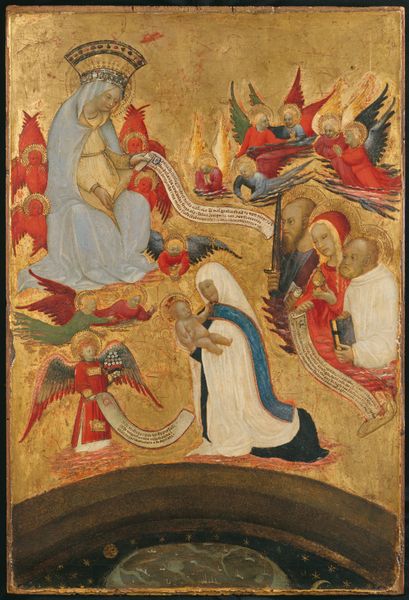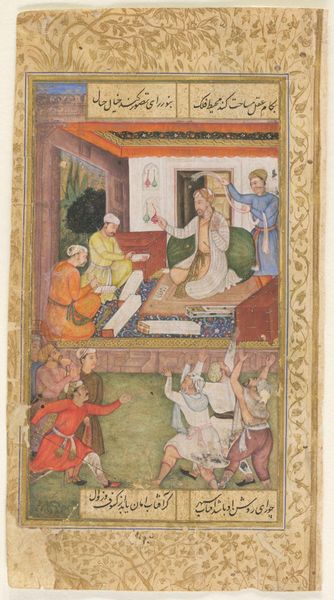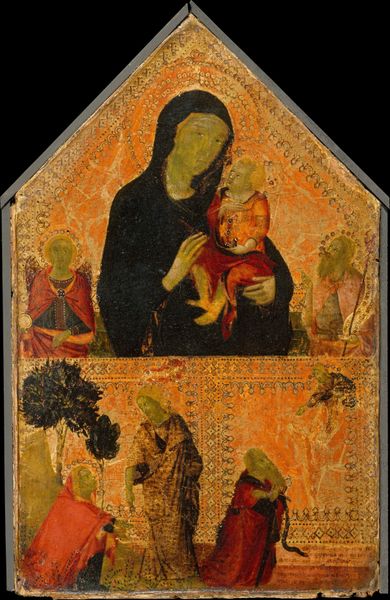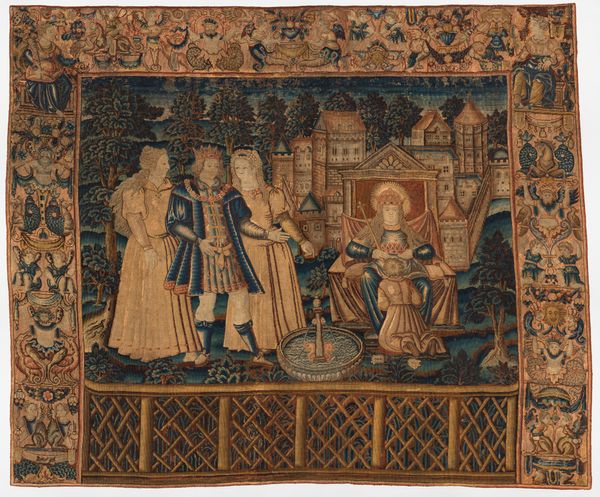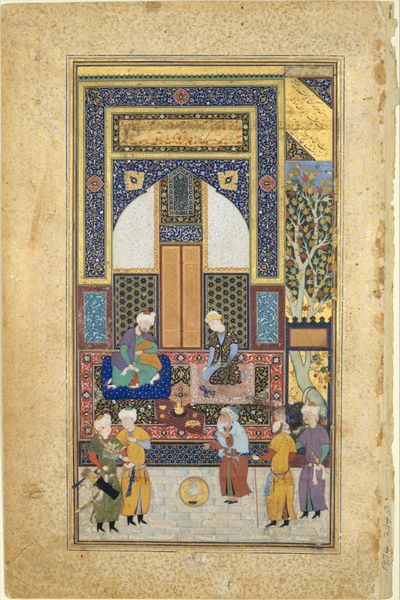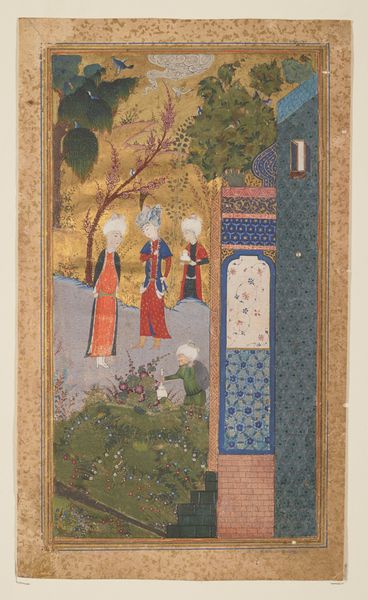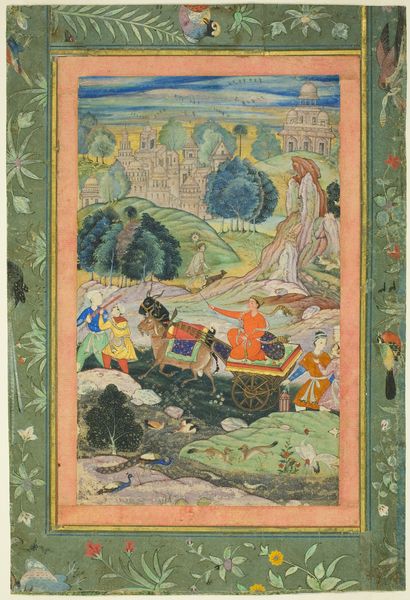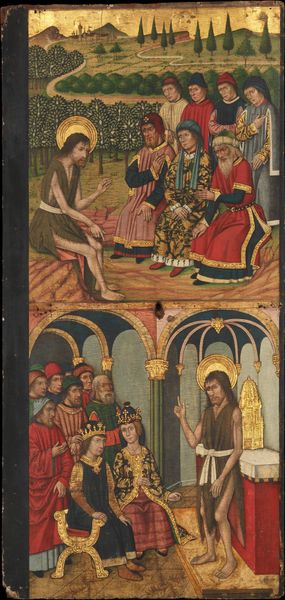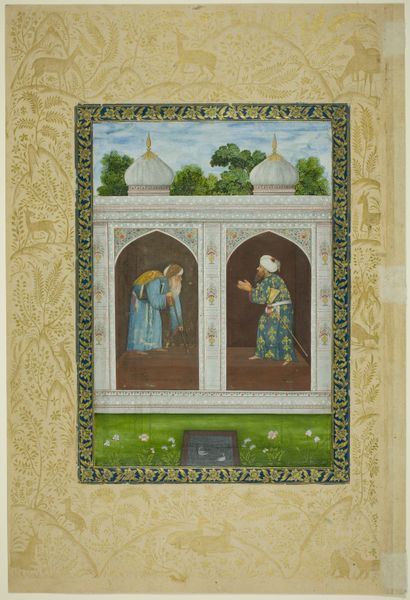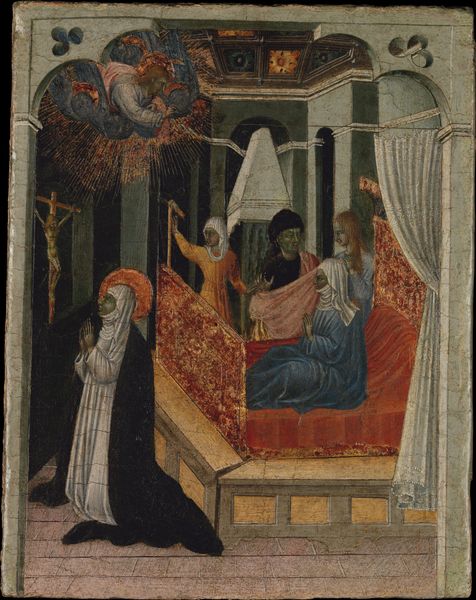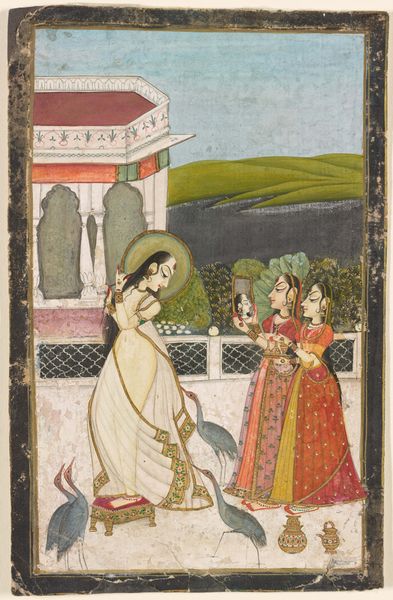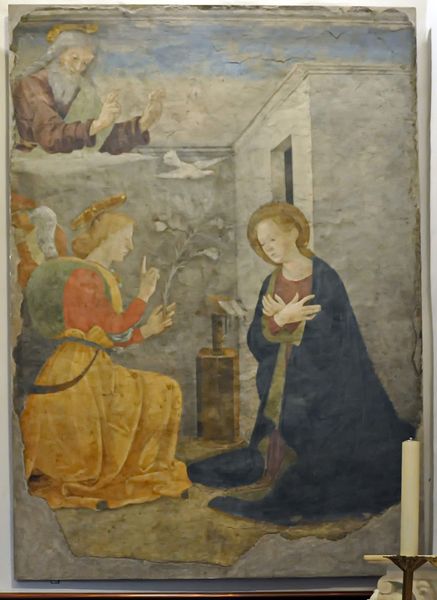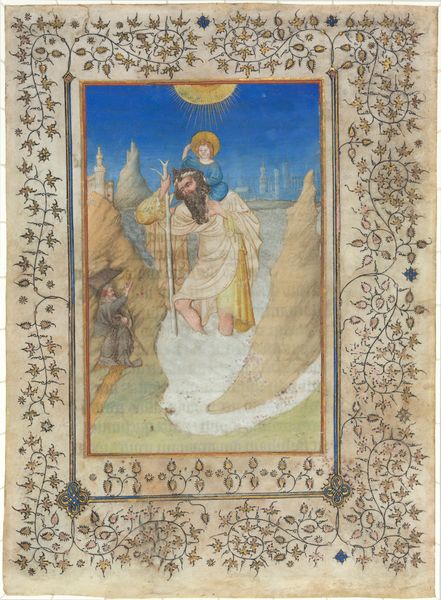
panel, tempera, painting, gold
#
portrait
#
medieval
#
panel
#
narrative-art
#
tempera
#
painting
#
gold
#
figuration
#
oil painting
#
history-painting
#
italian-renaissance
#
early-renaissance
#
virgin-mary
Dimensions: Overall, with engaged frame, 26 1/8 x 18 3/8 in. (66.4 x 46.7 cm); painted surface, including tooled border, 21 3/8 x 15 in. (54.3 x 38.1 cm)
Copyright: Public Domain
Curator: Standing before us is Giotto’s panel painting, “The Adoration of the Magi,” believed to have been created between 1337 and 1346. It is executed in tempera and gold on a wood panel. Editor: It has a stillness about it. Almost like a tableau vivant frozen in a golden dream, punctuated by that startlingly deep blue robe of the Madonna. Curator: Absolutely. Considering the physical production, the gold leaf, lavishly applied, would have signified immense wealth and power—the backing not merely decorative but an intrinsic value equivalent to royal patronage, quite typical for that time in Italy. Look at how the cost of labor and material elevated the sacred. Editor: And not just wealth, but the historical significance embedded in this singular event, the arrival of foreign dignitaries recognizing Christ’s divinity. Their rich clothing contrasts so markedly with, perhaps, the commonality one might associate with the location itself and perhaps even with Mary, a representation ripe with sociopolitical tensions about class, status, and international relations, would you say? Curator: I think that is a fine and nuanced observation, very keen to those power relations. The layers of gesso preparing the panel, the careful application of gold, the egg tempera binding pigment--each act performed with devotional labor, reinforcing religious authority by physically enacting a hierarchy of materials and expertise. These materials came at a great cost and labor expense. Editor: The intimate gathering and, of course, their very precious gifts serve as commentary on early forms of resource extraction and perhaps even diplomacy. The piece itself is evidence of deep cultural exchange. That interplay between resource, belief, and image-making is really thought-provoking here. The Virgin, an accessible, but divinely important representation, seems a central figure in her quiet strength, yes? Curator: I find it so compelling how Giotto blends Byzantine traditions with a burgeoning Renaissance naturalism. You can almost feel the weight of the fabrics, and discern those intentional expressions of depth; a deliberate movement away from symbolic representation and more toward observed reality that, as we know, began in Italy at that time. Editor: It seems that in some ways, that approach, rooted in class, colonialism, gendered archetypes, and material reality, can create profound insights into faith and art history today. Curator: I agree. Considering both the materiality and that complex social backdrop, the painting gives voice to stories we have only just started to uncover. Editor: I feel enriched and thoughtful now having learned more about what went into it, the material history, if you will.
Comments
No comments
Be the first to comment and join the conversation on the ultimate creative platform.
